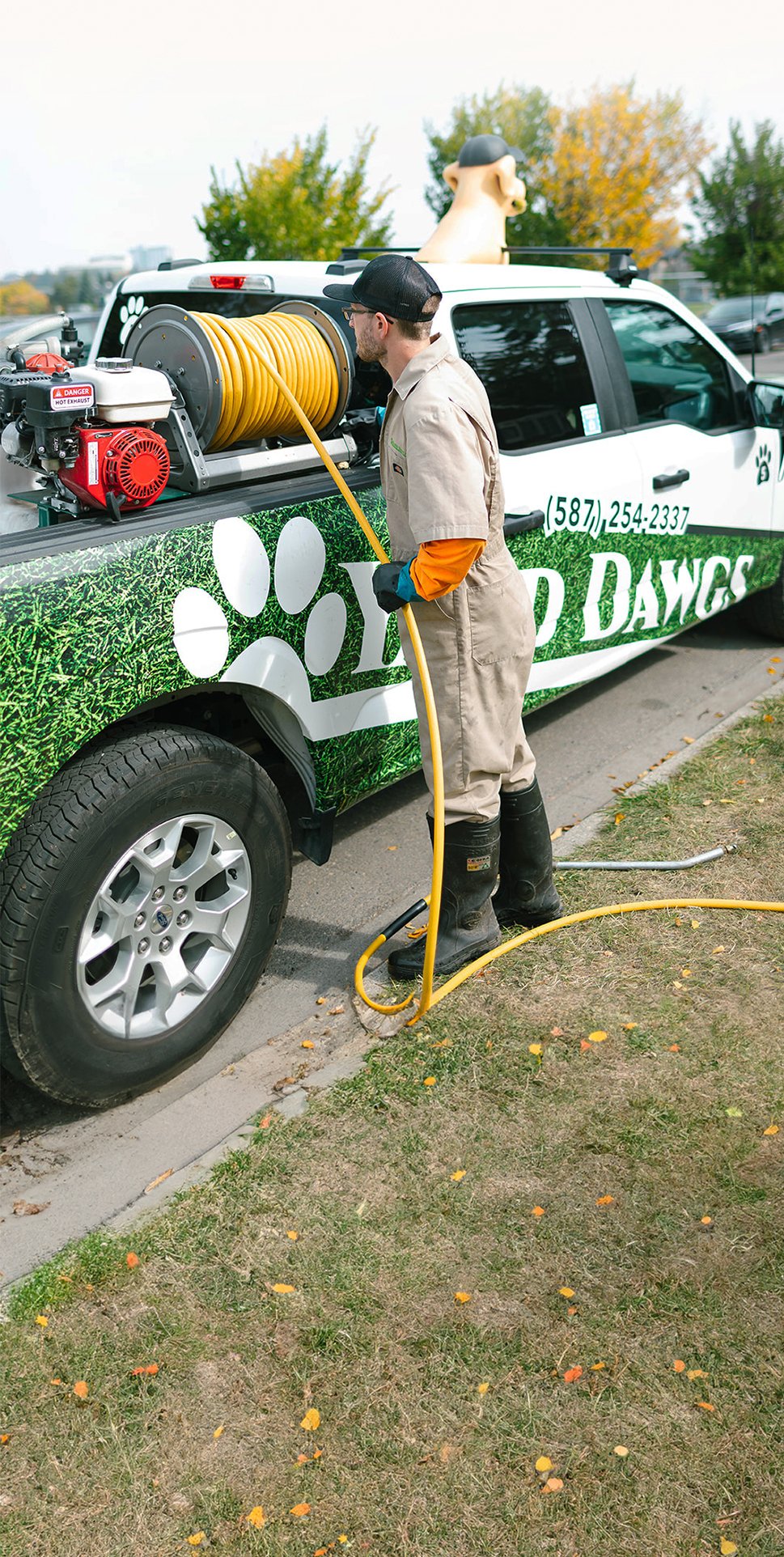While watering restrictions may pose challenges, they underscore the importance of proper watering practices. While watering your lawn is one aspect of lawn maintenance, a comprehensive lawn care service offers a multitude of benefits that go beyond hydration. It's important to highlight that partnering with professionals in the industry helps keep you informed and up to date on drought-resistance lawn care. Additionally, they bring expertise to ensure your lawn remains vibrant and healthy.
Calgary is situated in a dry area of southern Alberta and depends on river systems for water supply, making it susceptible to seasonal dry spells and prolonged droughts. As a result, dry conditions are not unusual in Calgary.

Our water supply comes from the Rocky Mountains; water that is collected from rain fall and snow melt.

The 4 Key Objectives of the City's Drought Resilience Plan:
- Strengthen Calgary's resilience to drought through proactive planning and response.
- Affirm the City's commitment to ecosystem health and watershed stewardship during drought planning and response.
- Raise local awareness about the impacts of drought and Calgary's identity as a drought city.
- Maintain confidence in the cities ability to manage drought with citizens, businesses and communities.
The City of Calgary has implemented a robust drought-resistant plan aimed at bolstering its resilience through proactive planning and response measures. With a strong emphasis on maintaining confidence, the city assures its citizens, businesses, and communities of its capability to effectively manage drought situations, alleviating any concerns and fostering a sense of security among its residents.
Drought Update Provided by The City of Calgary
(as of April 19th 2024)
- Natural river flows are normal to slightly below normal for April.
- Reservoir storage in the Bow Watersheds upstream from Calgary and at the Glenmore Reservoir is above the normal range for April.
- Mountain snowpack has improved, but has not fully recovered.
- Snowfall over the last 1-3 months has helped, but precipitation over the past year remains below average.
The City of Calgary continues to monitor the situation and will keep Calgarians informed as conditions evolve.
Outdoor Water Restriction Stages
There are four levels of outdoor water restrictions, which vary in severity depending on the extent of water shortages. Announcements regarding outdoor water restrictions will be made through local news outlets and social media channels. Depending on the specific stage of water restriction in place, please consult the following table to determine the mandatory actions you should take. The city continually monitors water usage among Calgarians to assess the need for restrictions and will notify residents of any updates or changes accordingly.
| Stage 1 | Stage 2 |
| 2 hr. max.; one day/week | 1 hr. max.; one day/week |
| Watering schedule is based on house number: |
| Even house number: Wednesday or Saturday |
| Odd house number: Thursday or Sunday |
| Watering is allowed between: 4a.m. - 7a.m.; or 9a.m. - 11a.m.; or 7p.m. - 10p.m. |
Proper Watering Practices
At the time that this blog was published, the current drought conditions were considered "dry". Should Stage 1 watering restrictions be implemented, the one thing that will remain consistent is the extent of limitations allowing a maximum of 2 hours of watering per week.

Proper watering practices are essential for maintaining a lush, healthy lawn, especially during the hot and dry summer months. The watering restrictions enforced for Calgarians aim to encourage these best practices. Rather than watering your lawn every day for short periods, which can lead to shallow root systems and increased water consumption, it's recommended to water less frequently but more deeply.
By watering your lawn two days a week for about an hour each time, you ensure that the water penetrates deeply into the soil. This deep watering method encourages the roots to grow deeper into the soil, making the lawn more resilient and drought resistant. Ideally, you should aim to moisten the soil to a depth of 6-8 inches with each watering session.
Deep watering has several benefits for your lawn. First, it reduces the need for frequent watering, saving both time and water. Second, it promotes a healthier lawn by encouraging robust root growth. A deeper root system allows the grass to access moisture and nutrients from deeper within the soil, making it more resistant to drought conditions.
Additionally, a healthy, deep-rooted lawn is more capable of withstanding foot traffic, pests, and diseases. it also results in a thicker, more vibrant lawn that enhances the curb appeal of your property.
How Lawn Care Can Help
Even with watering restrictions, homeowners should not be deterred from investing in proper lawn care. There are numerous practices that homeowners can adopt to keep their lawns healthy and vibrant.
1. Regular fertilization improves soil structure, allowing it to retain moisture more effectively. Healthy soil can support a resilient lawn that requires less frequent watering.
2. Proper mowing height and frequency can help promote stronger root growth and reduce moisture loss from the soil. Mowing at the right height can make a significant difference in water retention.
3. When watering is allowed, if we are to have watering restrictions implemented, make sure to water deeply and infrequently. Doing so in the morning or at night, rather than in the heat of the afternoon, reduces waste through evaporation and runoff.
To reiterate, adopting a less frequent but heavier watering schedule offers several advantages for lawn health. This approach encourages deeper root growth as the water penetrates further into the soil, reaching the root zone where it's needed most. Deep rooted lawns are more resilient and drought resistant, as they can access moisture and nutrients from deeper soil layers, reducing their dependence on frequent watering.
In summary, adhering to proper watering practices, such as watering your lawn deeply but infrequently, can help you maintain a beautiful and resilient lawn while conserving water. While watering restrictions may present challenges, they also offer an opportunity to rethink and optimize our approach to lawn care. By investing in professional lawn care services, you can benefit from expert guidance and tailored solutions that not only meet the requirements of watering restrictions but also promotes the overall health and longevity of your lawn. Remember, you can enjoy a vibrant lawn that thrives within the boundaries of water conservation.





